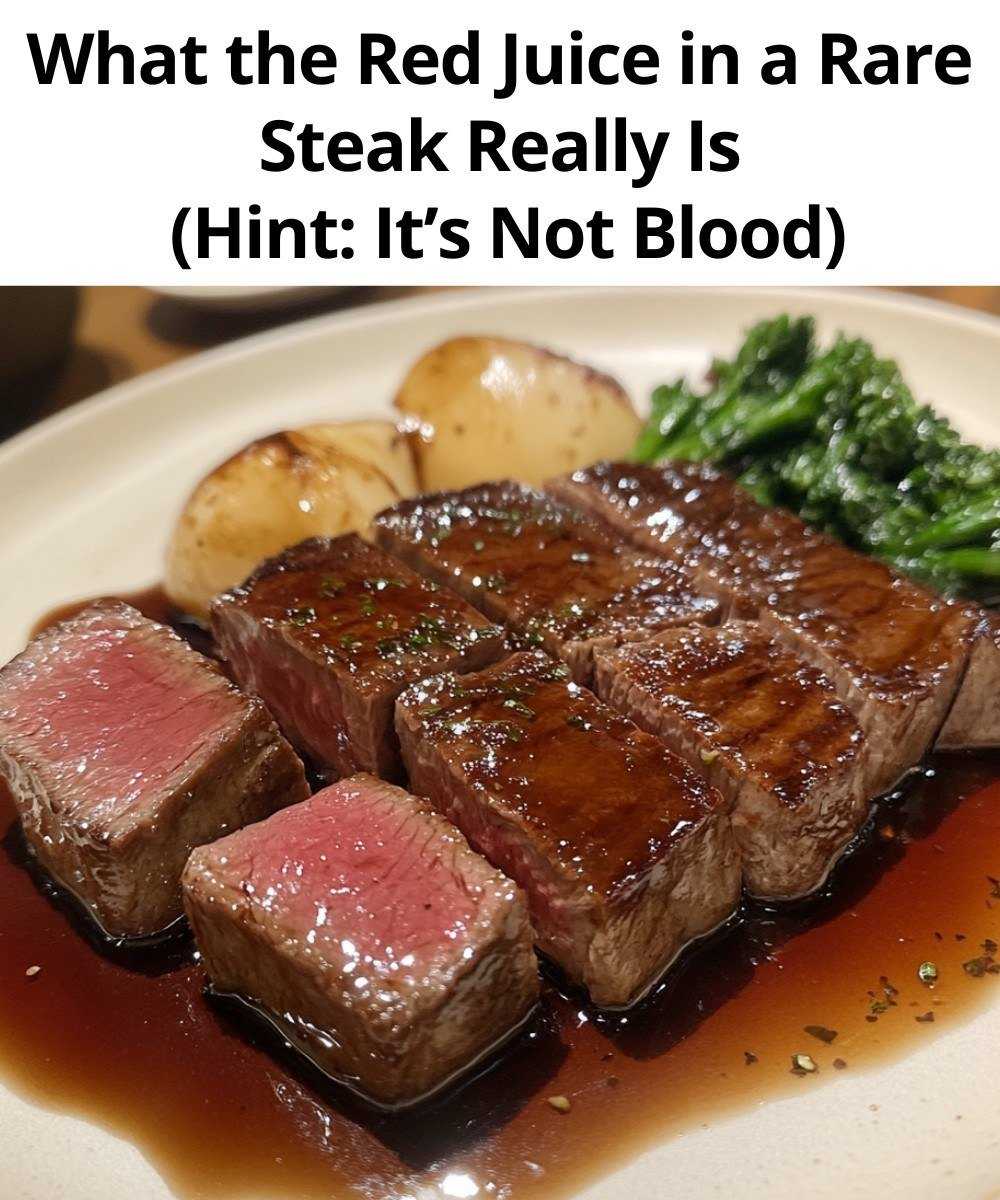ADVERTISEMENT
### What the Red Juice in a Rare Steak Really Is (Hint: It’s Not Blood)
If you’ve ever cooked or ordered a rare steak, you’ve likely noticed the reddish liquid pooling on your plate. While it might look like blood, it’s actually something entirely different. Understanding what this red juice really is can enhance your appreciation for how steak is cooked and help clear up a common misconception.
In this article, we’ll explore what the red juice in a rare steak is, how it’s formed, and why it doesn’t have anything to do with blood.
—
#### **The Red Juice: What Is It Really?**
The red juice in a rare steak is not blood but **myoglobin**, a protein found in muscle tissue. Myoglobin’s primary function is to **store oxygen** in muscle cells, which is essential for muscle function, especially in animals that engage in intense physical activity.
When you cook a steak, the heat causes the **muscle fibers to contract**, and the myoglobin is released. This results in the reddish liquid you see. While blood is present in muscles during an animal’s life, the amount of blood left in a steak after it’s been butchered is minimal. Most of the blood is drained away during the processing of the meat.
—
#### **Myoglobin vs. Hemoglobin**
To understand why myoglobin is the key player here, it helps to know the difference between **myoglobin** and **hemoglobin**.
– **Hemoglobin** is the protein in **red blood cells** responsible for carrying oxygen throughout the body. It is found in the bloodstream and is what gives blood its red color.
– **Myoglobin**, on the other hand, is a protein in **muscle cells** that stores oxygen and releases it as the muscles require it for movement. Myoglobin is also red but has a different structure and function from hemoglobin.
Because myoglobin stores oxygen in muscle tissue, it is present in higher concentrations in **muscle-heavy areas** of animals. This is why certain cuts of meat, like **beef steaks**, have a noticeable amount of the red juice when cooked to a rare or medium-rare temperature.
—
#### **Why Does It Appear Red?**
The red color of the juice is a result of myoglobin’s interaction with **oxygen**. When myoglobin binds with oxygen, it takes on a red hue. In rare steaks, the muscle fibers are minimally cooked, and the myoglobin has not been fully altered by heat. Therefore, it retains its red color.
As the steak is cooked to a higher temperature, the myoglobin breaks down and changes its structure, causing the liquid to turn from red to a darker brown color. This is why well-done steaks do not release the same reddish juice.
—
#### **Does the Red Juice Affect the Taste or Quality?**
Contrary to what some people may believe, the red juice in a rare steak is completely **safe to eat** and doesn’t indicate that the steak is undercooked. In fact, myoglobin contributes to the **flavor** and **juiciness** of the meat.
The liquid is not just water; it contains proteins, amino acids, and other compounds that are rich in flavor. For those who enjoy rare steak, the juice adds to the overall texture and taste experience.
For Complete Cooking STEPS Please Head On Over To Next Page Or Open button (>) and don’t forget to SHARE with your Facebook friends
ADVERTISEMENT
ADVERTISEMENT
